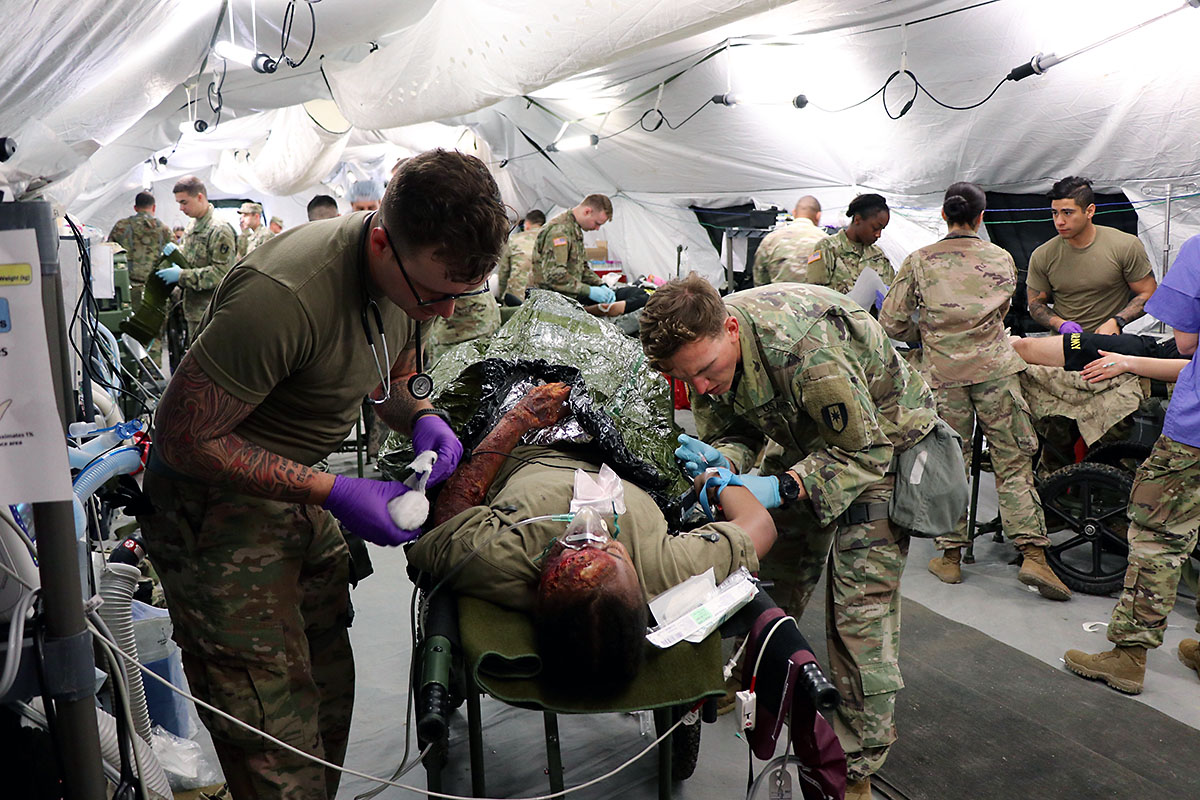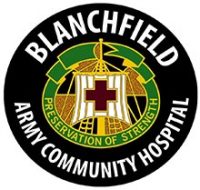 Fort Campbell, KY – Soldiers from Blanchfield Army Community Hospital (BACH) joined their medical counterparts from the Fort Campbell-based 586th Field Hospital recently for a field training exercise aimed at measuring the readiness of the 586th and its ability to integrate medical staff from BACH.
Fort Campbell, KY – Soldiers from Blanchfield Army Community Hospital (BACH) joined their medical counterparts from the Fort Campbell-based 586th Field Hospital recently for a field training exercise aimed at measuring the readiness of the 586th and its ability to integrate medical staff from BACH.
“The 586th Field Hospital was activated last year and began its training cycle from the ground up, creating clinical standard operating procedures…developing methods to test the SOPs. The focus of this FTX is to get after our clinical tasks for the 68 Whiskey’s (combat medic specialists) and 68 Charlies (practical nursing specialists) and integrate some of our medical augmentees who work at Blanchfield Army Community Hospital,” said Maj. Matthew O’Conner, chief of nursing for the 586th and FTX coordinator.
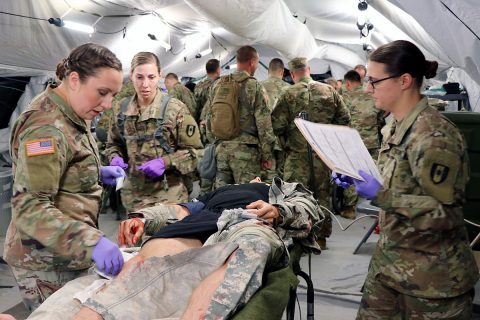
O’Conner and other trainers planned a mass casualty drill complete featuring role-players with realistic looking wounds to test the first responders’ ability to treat and evaluate casualties and triage patients to the appropriate level of care within the field hospital.
While the action begins in the emergency section, a mass casualty will ultimately encompass each section for the field hospital.
“The EMT section (emergency section) gets a lot of the glory…and the gore. It’s a very hectic environment, but as soon as it’s triggered that they’re receiving patients all of the other sections send a representative,” said O’Conner. Other sections from the field hospital include surgery, lab, radiology, pharmacy, patient administration, intensive care and even dental and veterinary medicine staff and others who are trained to assist if needed. O’Conner said this method enables the emergency section to have the help it needs immediately available in order to save lives. Medical staff not in the emergency section begin preparing their sections for demand that will soon follow.
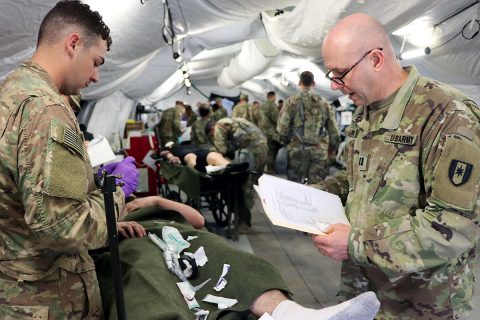
A lot of planning goes into preparing for the exercise and the details are close-hold. Only O’Conner and members of the training team know the scenarios that will unfold. This is by design to test the medical staffs’ response.
“We developed the scenarios for the patients. The scenarios will key the doctors and nurses here as to what’s happening to the patient, which should trigger a reaction, such as ordering a [cat scan], ordering blood products, [sending someone into] immediate surgery or determining if that can be delayed. All of those factors come in to creating the scenario,” said O’Conner. Moulage effects, like fake blood and fake wounds are applied to the simulated patients in order to create the most realistic scenarios for the training.
O’Conner added that it makes the training more realistic and in tune with the objectives, and Soldiers agree.
“I wasn’t expecting it to be so chaotic, but then once the initial take-off happened and everyone found where they were supposed to be, which was pretty instantaneous, it went through pretty smoothly,” said Spc. Elizabeth Dodder, a medic at Blanchfield who has served in the Army a little more than a year. This training was her first opportunity to experience a field hospital. “You could see the [physician assistants] and the doctors and everyone running through and all the nurses making sure that everybody had the right medications and interventions — and once they did, the medics really did what they needed to do. It was great.”
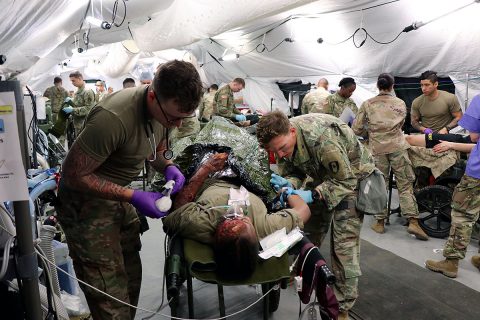
O’Conner and scene observer/controllers on the training team graded the Soldiers’ responses during the drill and provided feedback to leadership which can be incorporated into future exercises to build on the unit’s capabilities.
“I think it’s phenomenal. We set up. Everything looks well and then with the organic staff incorporating and integrating Blanchfield providers, it’s just been great. Everybody’s motivated and we’re really making an impact,” said Lt. Col. Brian Freidline, 586th Field Hospital commander.
The 586th is part of the 531st Hospital Center, assigned to the 44th Medical Brigade, Fort Bragg, North Carolina. The 531st Hospital Center and subordinate units operate from Fort Campbell to support the 101st Airborne Division (Air Assault), unified land operations and defense support of civil authorities.

